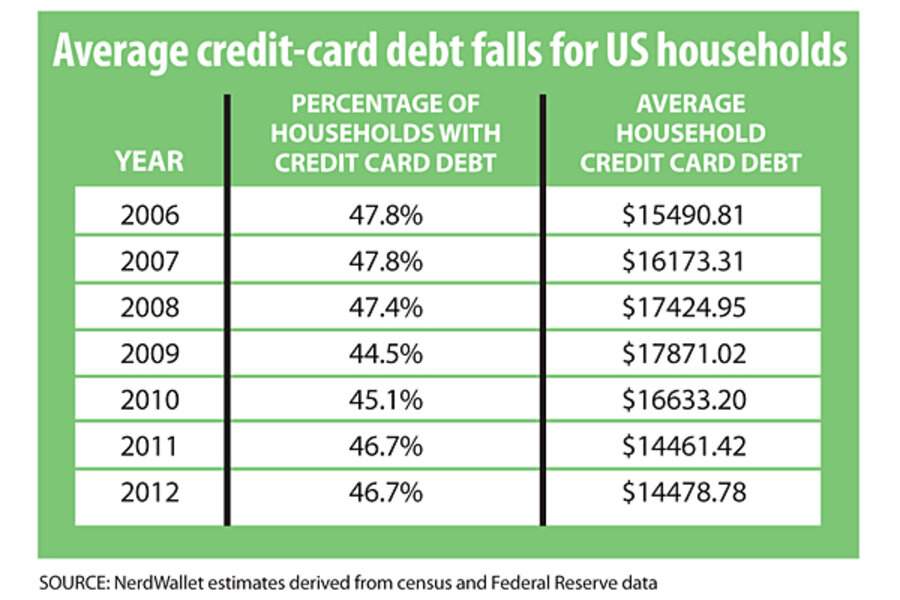Credit card debt is down, but don't cheer
Loading...
It sounds encouraging: Since the beginning of 2010, the credit card debt of the average American household has fallen by $2,150.
From around $15,000 in 2006 to a peak of $18,000, average credit card debt then plummeted to around $14,500 by the end of 2010 and hasn't moved much since. Unfortunately, that's not nearly as good as it sounds.
Credit card debt has dropped not so much because the job market is improving or borrowers are more financially responsible. It has fallen mainly because in 2010 banks gave up trying to collect bad debt. In the second quarter of 2010, the charge-off rate, which is the percentage of debts declared uncollectible, spiked over a full percentage point from the same period in 2009. Banks took their losses and wiped those delinquent loans off their books.
The result for households? With fewer seriously delinquent accounts skewing the average, the typical household in the United States owes less credit card debt. But a greater percentage of households is indebted than in 2010. The overall debt picture doesn't look much better for most indebted households and, in one area, could be getting worse.
At $13.5 trillion, mortgages account for the lion's share of the average American family’s debt. Credit cards are the third largest debt category at $803.6 billion. What takes second place? Student loans. Student debt stands at a whopping $1 trillion.
Let's do a little extrapolation. The subprime mortgage crisis was caused by too many loans to people who couldn't pay them off. The credit card bubble burst because too many cards were given to people who couldn't make their payments. Student loans are among the easiest financial products to obtain. Borrowers do not need to demonstrate fiscal responsibility or a trustworthy credit history. Virtually anyone can acquire loans to fund education. Do you see where this going?
The past five years of credit card debt signal a deep economic trouble that goes far beyond consumer irresponsibility. The nation's debt is not merely a consequence of extravagance and material excess. Just over half of low- and middle-income Americans who were carrying a credit-card balance for at least three months are using credit cards for day-to-day living expenses, according to a recent national survey by Demos. The recession has left many consumers relying on plastic to stay afloat.
It's not just young people or families. According to the same survey, low- and middle-income seniors have turned to credit cards, too. With their retirement savings decimated by the financial crisis, Americans 65 and over now average $9,283 in card debt. Reckless spending is not necessarily at the root. If the choice is between deeper debt or declining health, most will choose to survive.
For the moment, private debt isn't rising because banks are leery of lending. With the housing bubble bursting so recently, it will take a few years for memories to fade. But they will.
As we continue climbing out of recession, you can count on lenders to lower standards and again start loaning money to high-risk borrowers. The Consumer Financial Protection Bureau hopes to increase transparency in credit cards and student loans through better disclosure, but how much can reason-based initiatives counter the lure of cheap money or higher education?
We've seen it with housing, we've seen it with credit cards, and we will soon see it with student loans. It's time we make an earnest attempt to start deflating economic bubbles before they burst. If we continue taking large risks during times of economic prosperity, we're doomed to a very cyclical existence of crippling debt and sluggish recovery.
We need more permanent solutions. The credit card, housing and student loan bubbles all share a common denominator: untenable financial products issued to high-risk consumers. Either the products (loans, mortgages, credit cards) require greater regulation, or consumers need a helping hand (affordable tuition, financial literacy programs, increased medical assistance). One or both variables must change if America is to end chronic
overspending.
– Stephen Vanderpool is a senior content specialist at the personal finance and credit card website NerdWallet.com.







